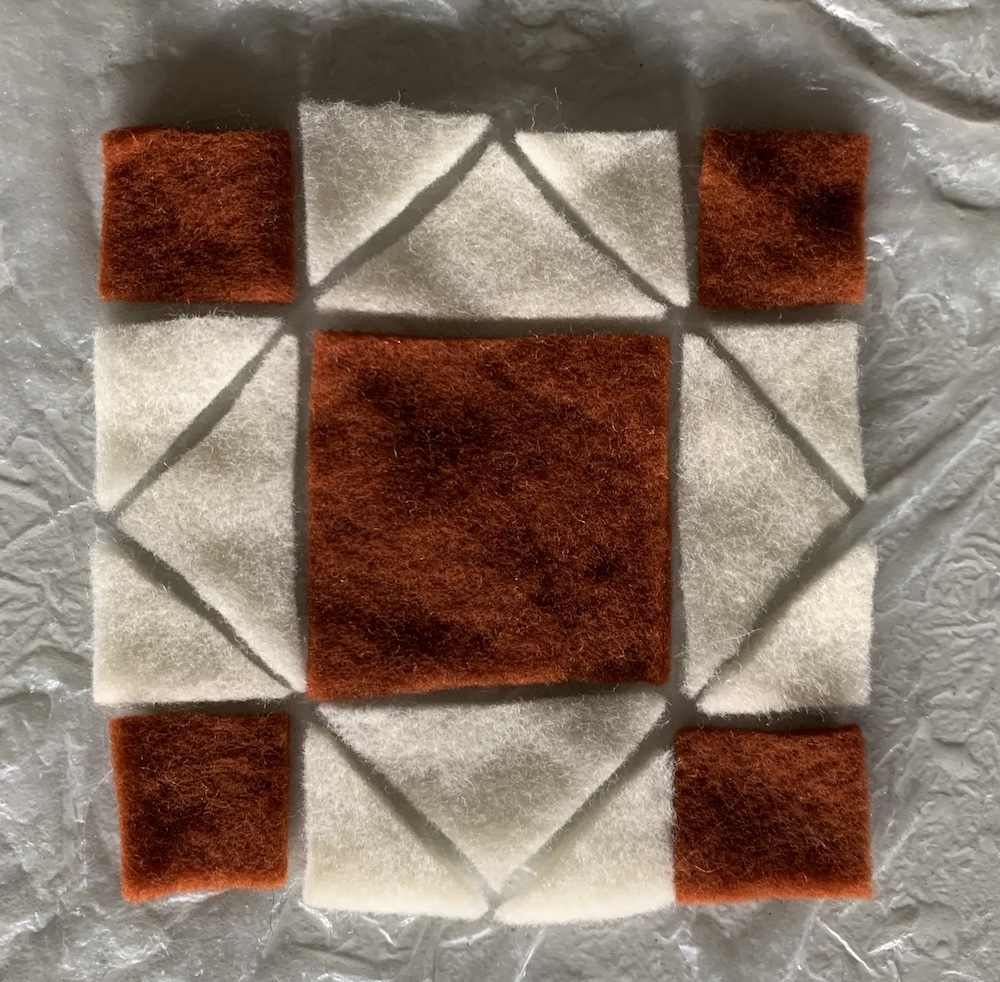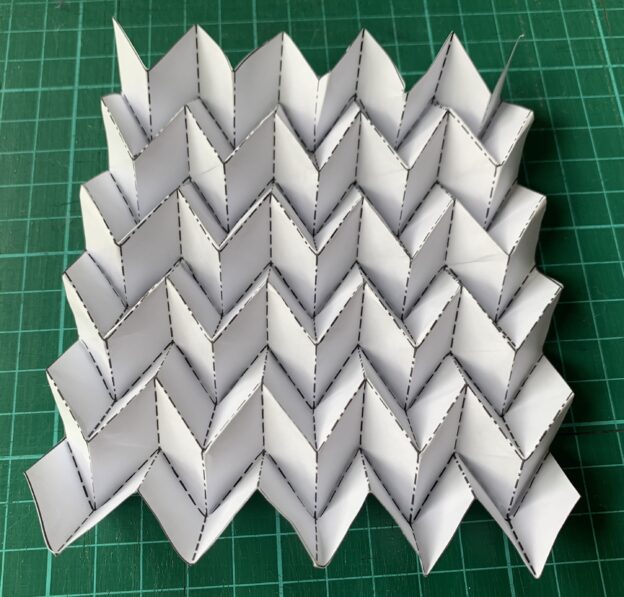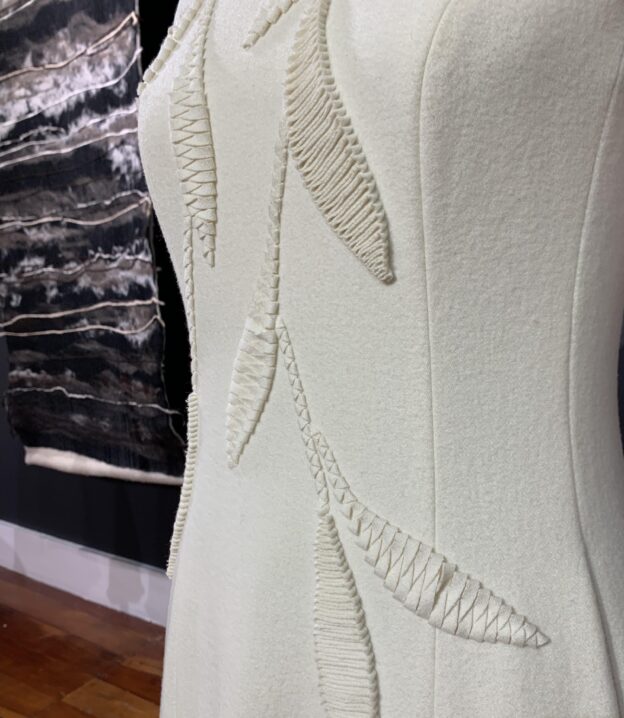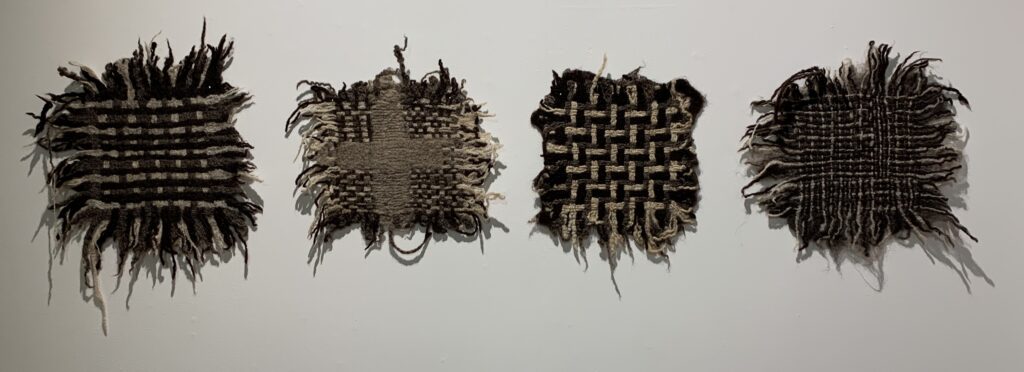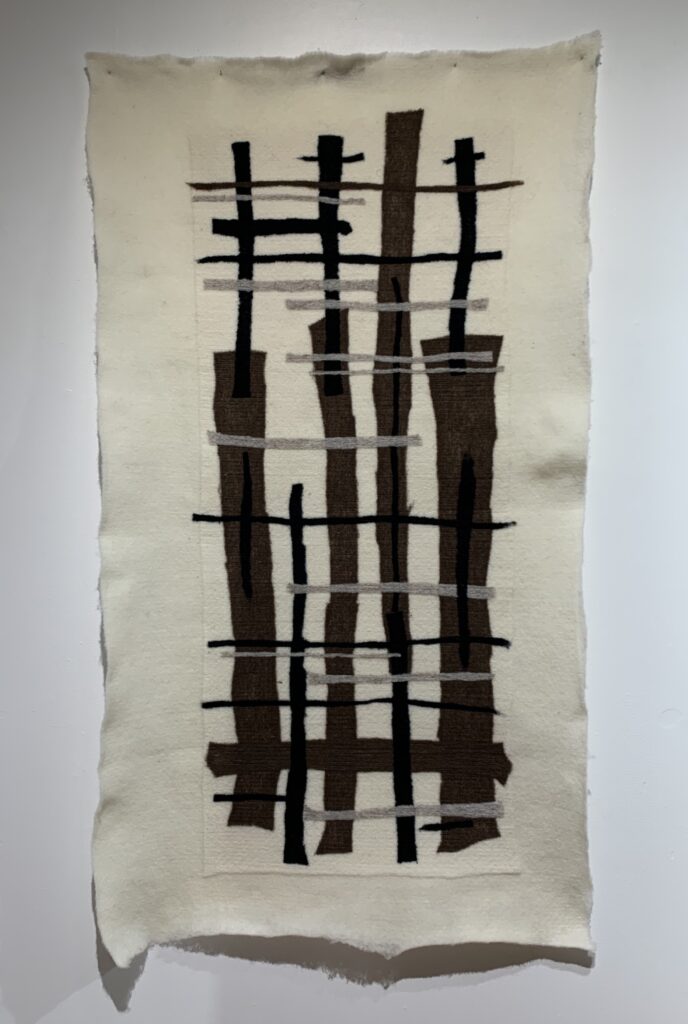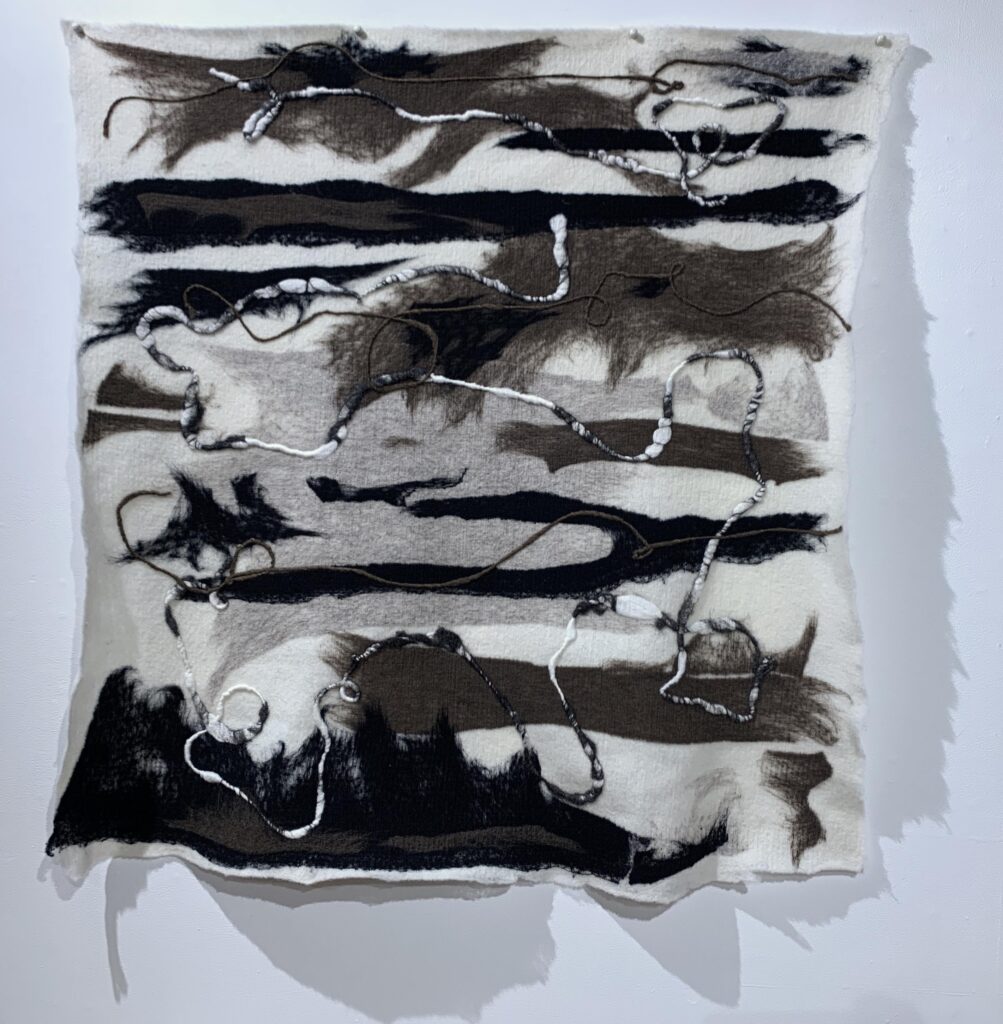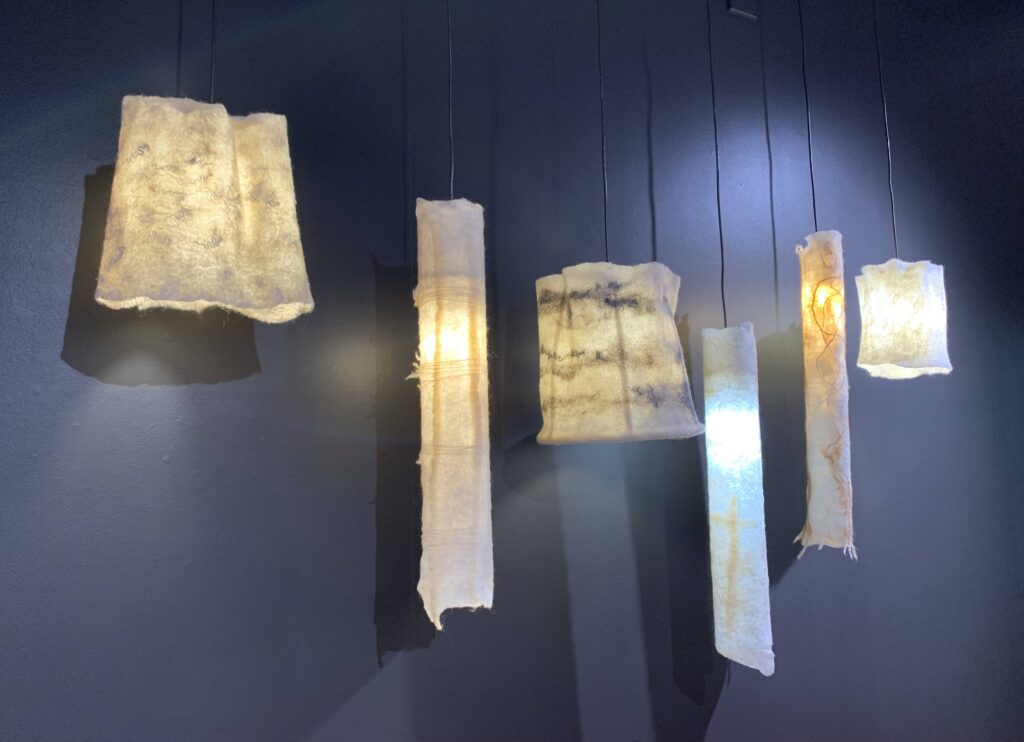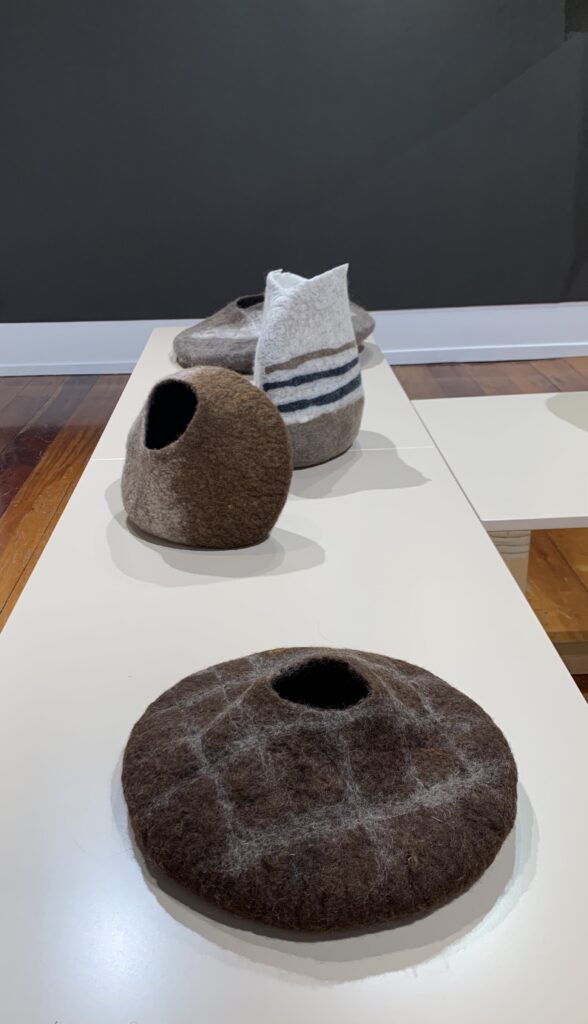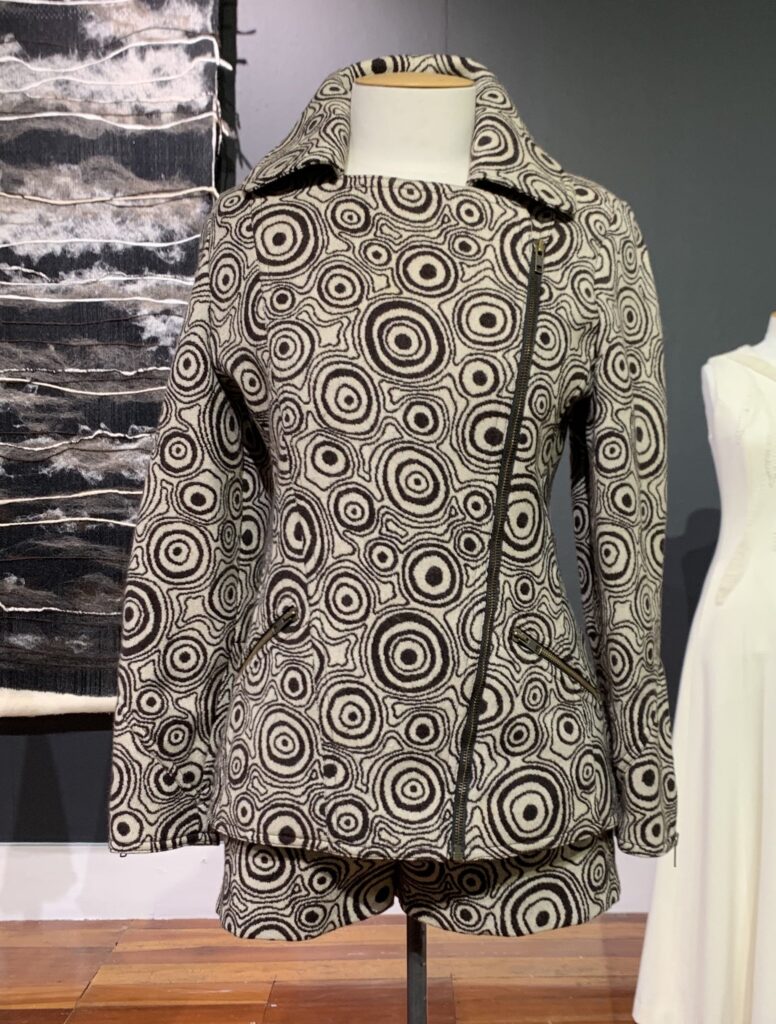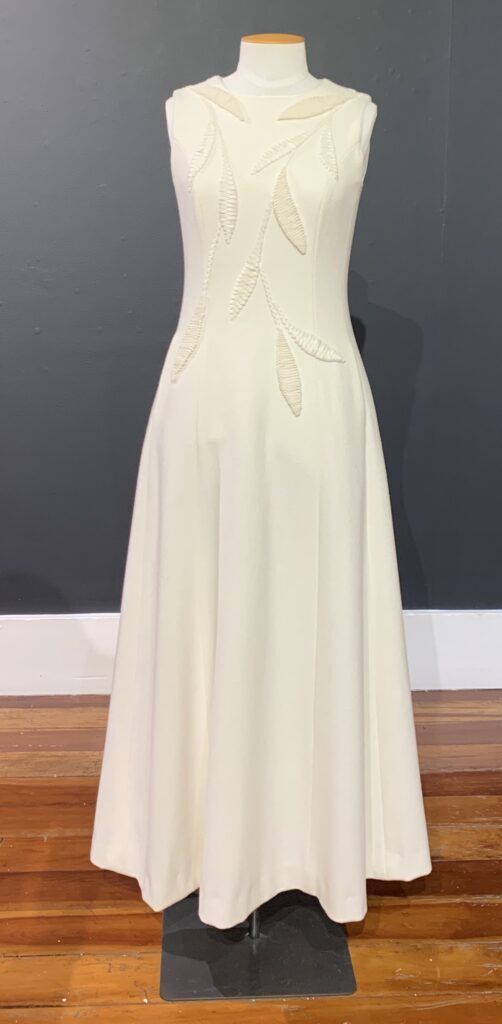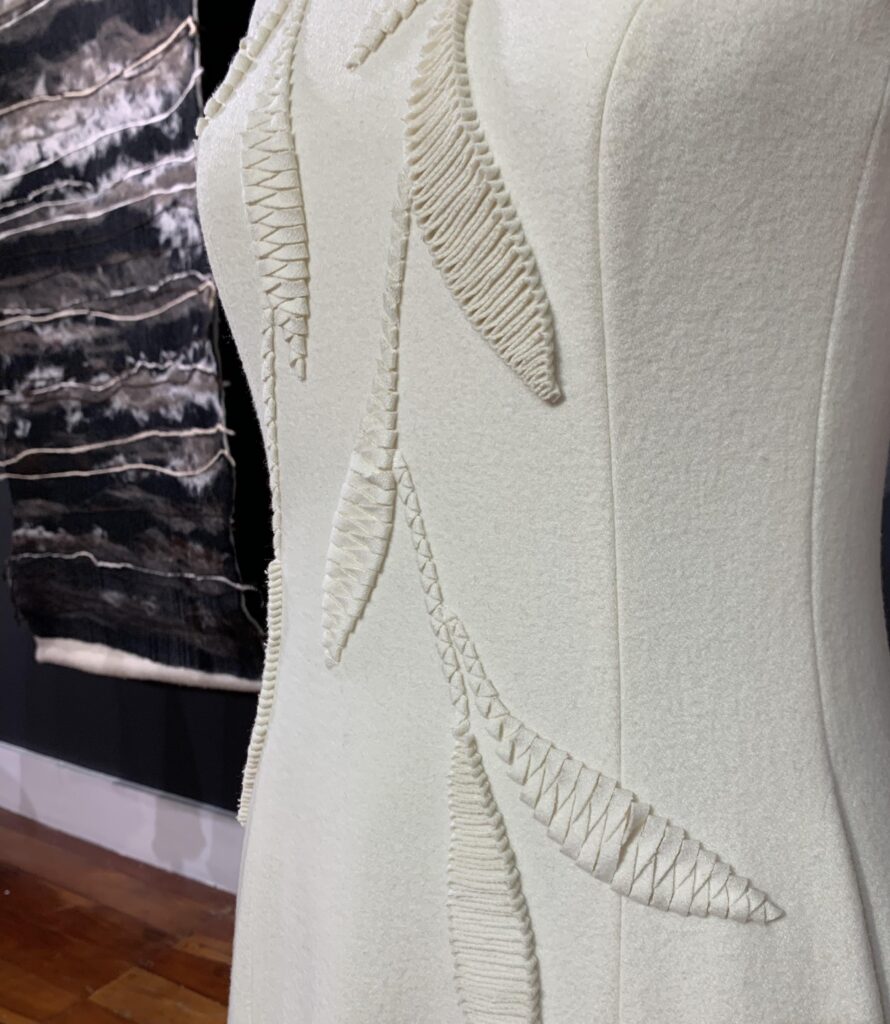I have long admired the work of Andrea Noeske-Porada, she is a felt artist best known for her origami pieces. As far as I can tell she does not have a website but if you type her name into google you will find yourself buried under an avalanche of inspiring images of her work and what her students have made.
For years I was fascinated by her kaleidocycle design and hoped to take a workshop with her to learn her felt origami techniques but after our move to NZ I realised this dream is probably never going to happen, so set myself the challenge of trying to figure out how to make one. It took a few attempts but I was eventually successful.
Please don’t ask me to explain how it was made, this is Andrea’s design and if you can’t figure it out, please sign up for a class with her 😉
I acknowledge I am a bit of a creative magpie, I always have at least 3 projects on the go and my UFO (unfinished objects) box is overflowing. Maybe this is you too? I suspect it is part of the creative mindset that we struggle to focus on just one thing at a time, our brains are wired to be constantly on the lookout for the next exciting development….
In some ways I think this is a good thing, it means I am frequently presented with opportunities to incorporate 2 or more techniques or materials in the same project to create novel combinations. However, I also feel like I am frequently just skimming the surface of what is possible with each technique or idea. With that in mind I decided to kick off 2024 with a 30 day challenge (feel free to play along if you wish!):
To explore a different folded / pleated shape every day
This theme was partly inspired by origami felt, and origami has already worked its way into what I have been doing this month but I have deliberately avoided using origami in the mission statement to leave the door open for exploring related techniques such as pleating and smocking. I’m also bound to go off on some random tangent before the end of the month too!
The first week:
In order to really learn, we first need to make mistakes or encounter some minor disaster….
My first “disaster” was instigated by this book:
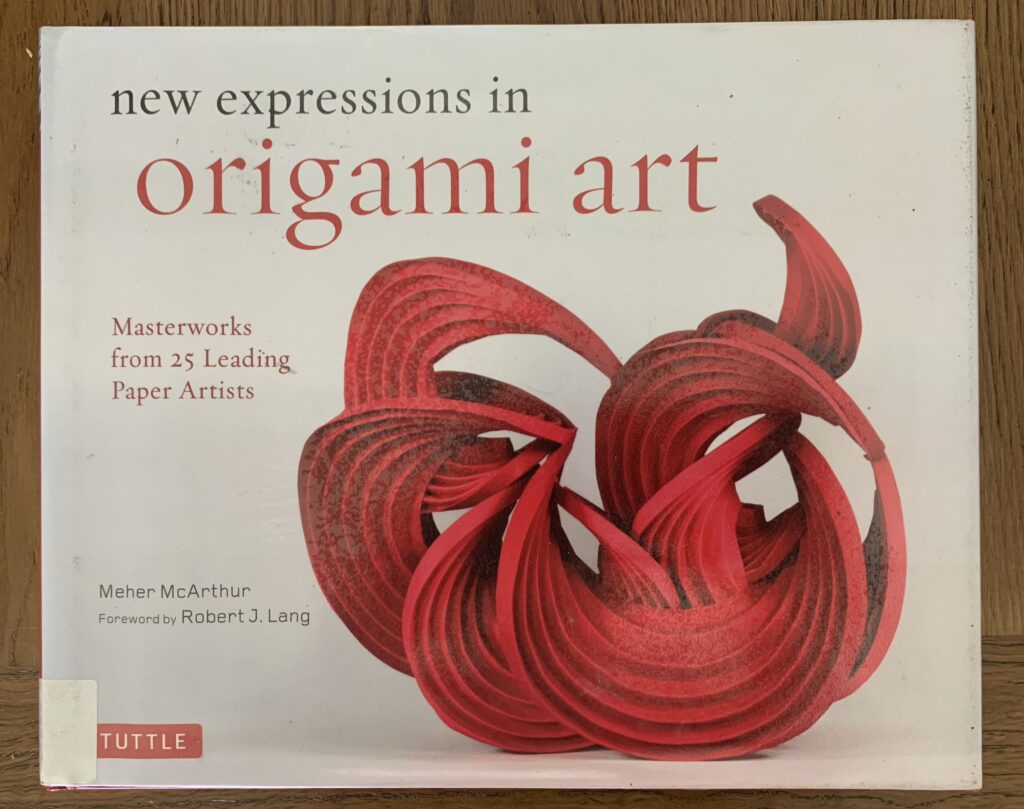
It is chock-full of inspiring and gorgeous (mostly paper) sculptures but contains no instructions at all… “how hard can it be?” I cockily thought to myself as I reached for some wool and a pair of scissors….
Thankfully I had enough sense to start small:
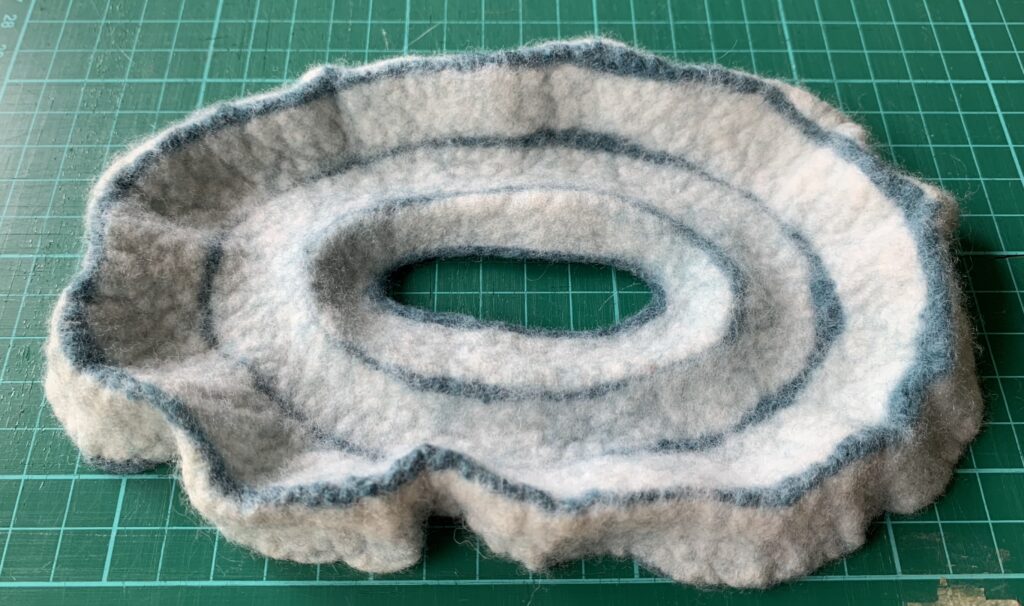
No matter how I stretched and rubbed the felt it refused to make lovely concentric pleats and folds 🙁
I convinced myself it was because I used an oval template instead of circle, so on day 2 I made this:
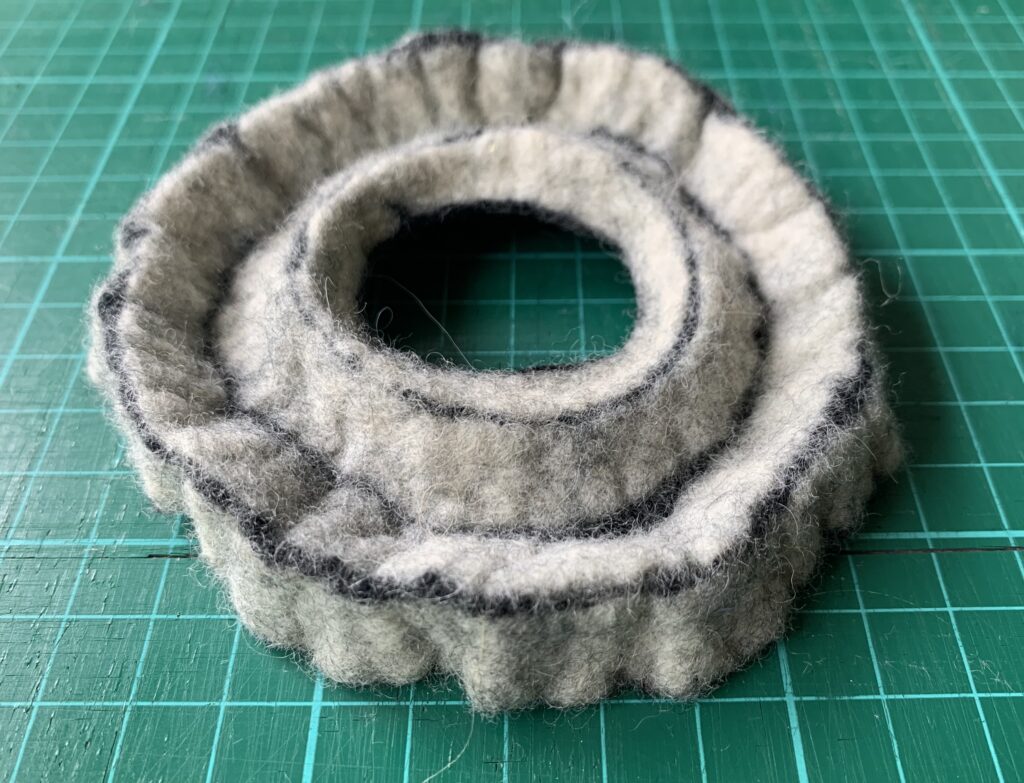
While I like the shape of this one a little more, it still wasn’t folding how I expected it to.
Frustrated, I decided to play with paper folding instead (looking back this would have been a much more sensible place to start!).
Day 3:
I found some amazing origami websites (with some much needed instructions!) and sat down to play (I apologise for the scruffy appearance of some of my origami but these pieces have been folded and unfolded multiple times):
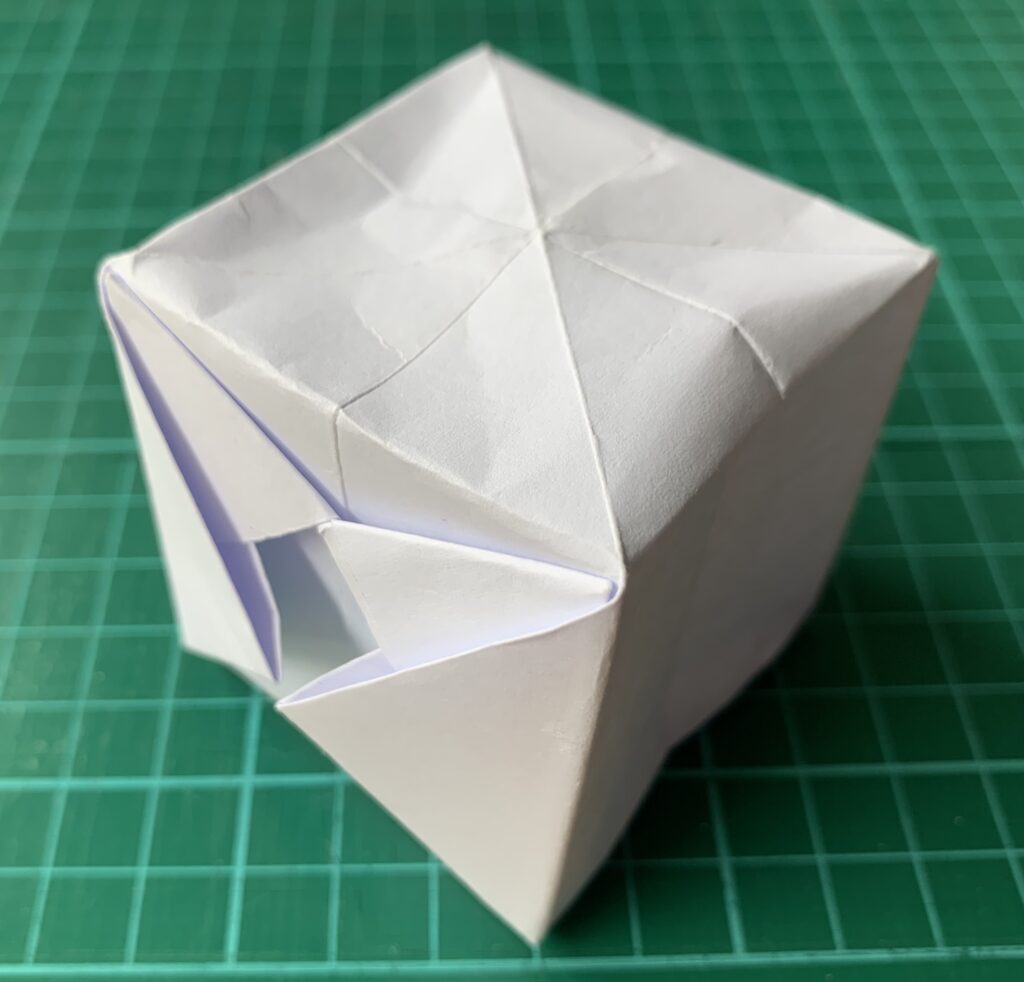
The box was fun to make but there are much easier ways to make cubes from felt (take a look at my free book resist tutorial if you’d like to give that a go).
I love this next pattern, this is one that I have attempted to make in felt before but playing with it in paper, I’m enjoying the stretchy qualities it has and wondering if it would work as a cowl? I found this print out on an engineering website, apparently this is a popular pattern for folding mirrors and solar panels used on satellites.
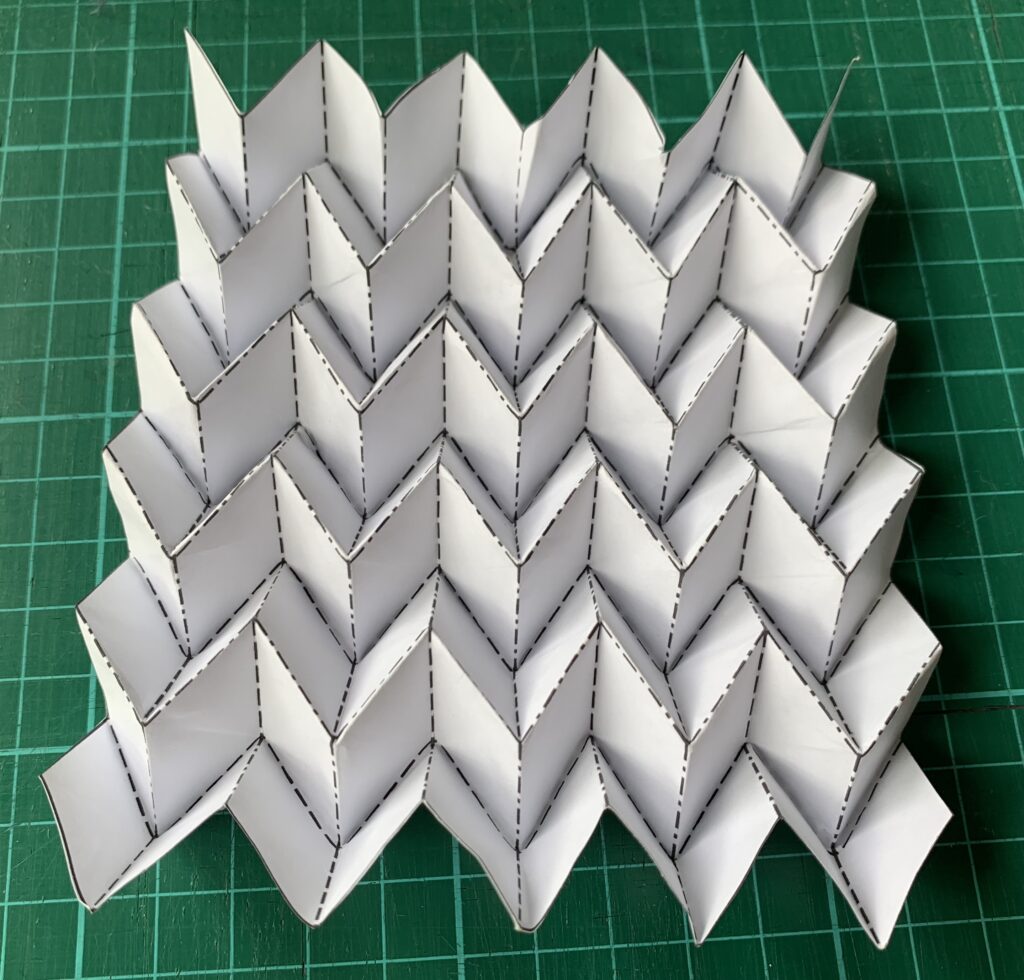
Day 4
The photo of this piece doesn’t do it justice, it is much more interesting to look at from different angles, you can probably tell from the state of it that it has been unfolded and refolded multiple times when I translated the pattern into felt.
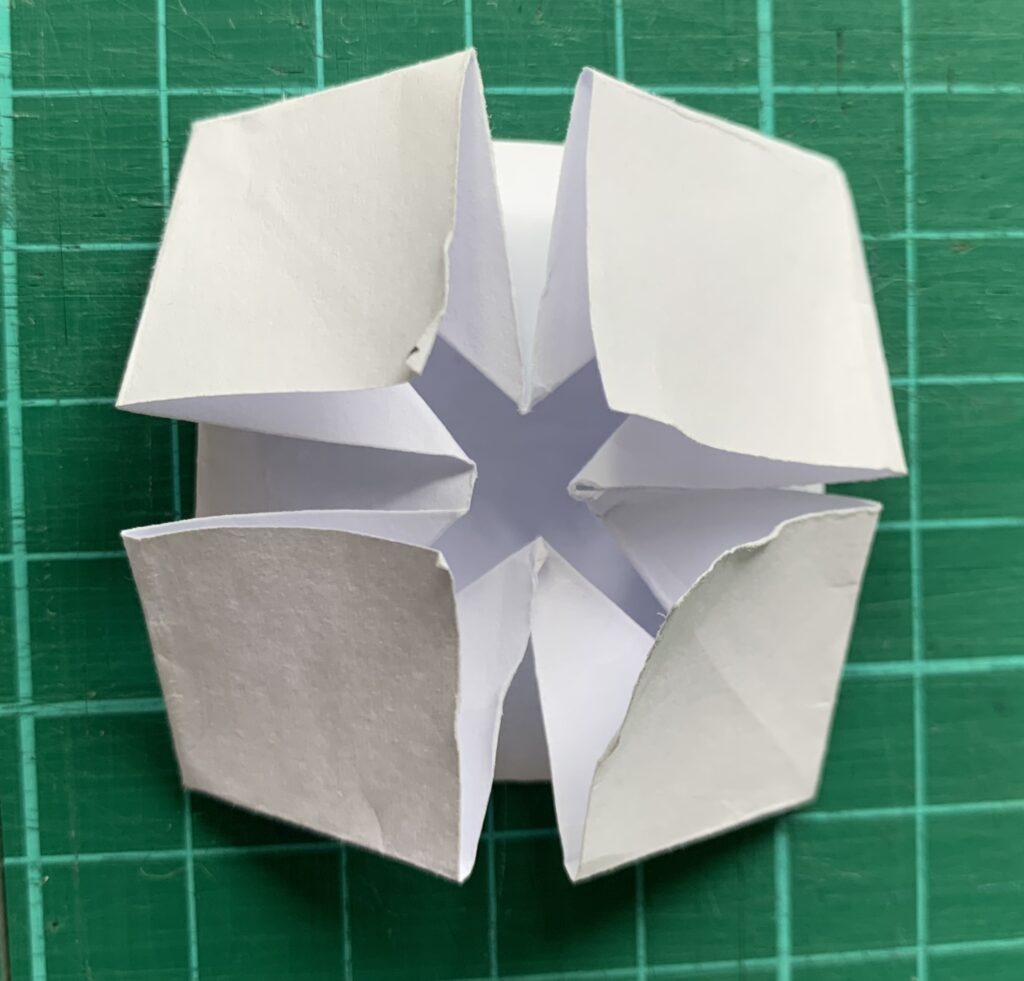
Day 5
I decided to revisit the concertina style folds of my first 2 attempts in felt but this time in paper.
The circles were still frustrating me, the curved pleats just refused to fold, I now think I understand why they don’t work but I will save those explorations for my next post.
Concertina folds along straight lines were far more successful:
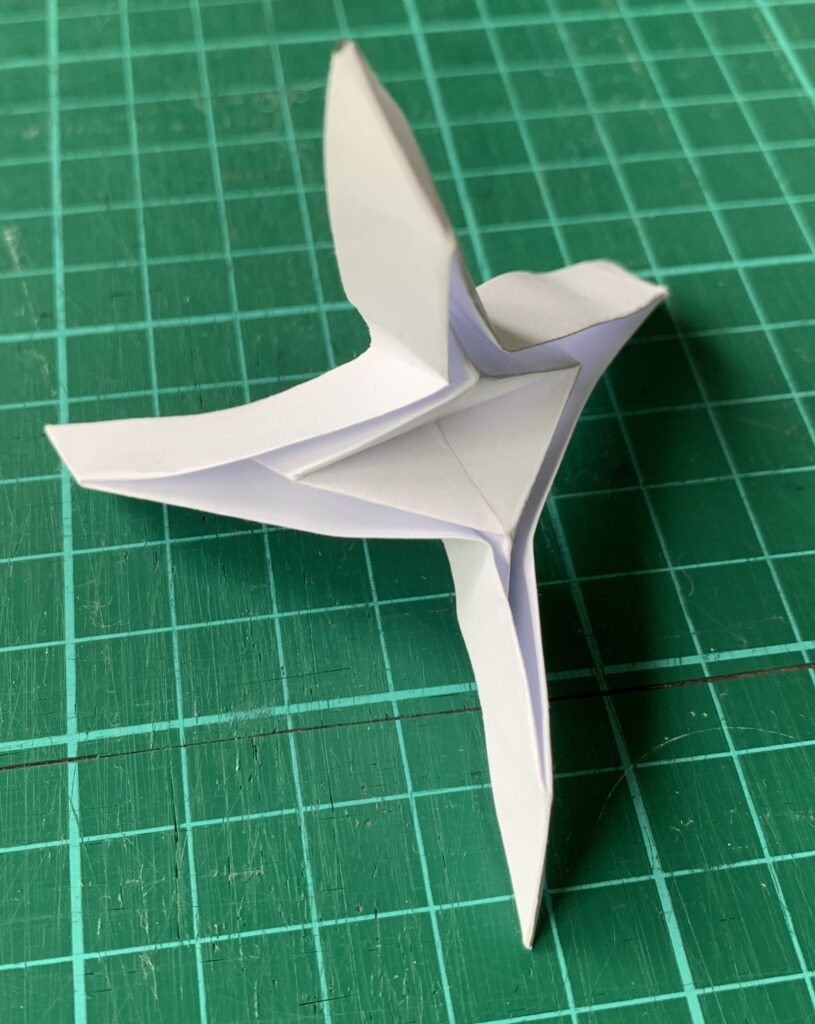
Day 6
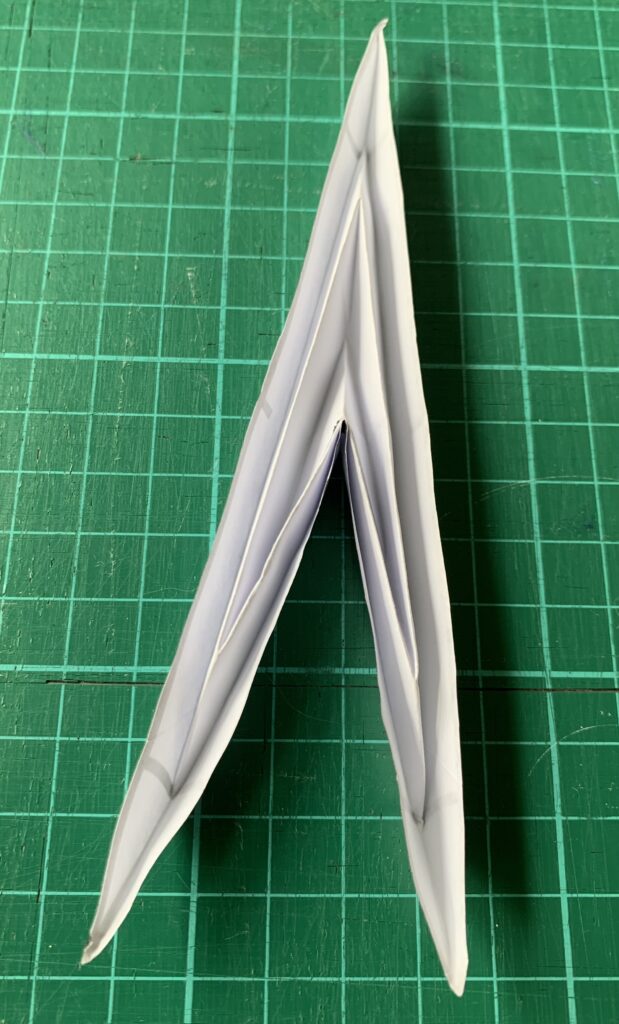
Day 7
Excited by how well the paper origami samples turned out I started translating some of the shapes into prefelt and felting them. The felt versions are much more flexible than their paper cousins, offering a myriad of different forms just by twisting or folding different sections, my favourite is the flower shape at the end of this video:
Day 8
I turned my favourite of the origami shapes into felt and was very pleased with the outcome:
